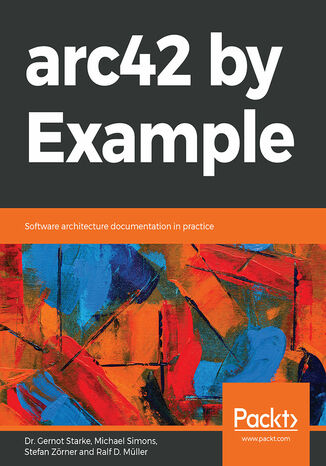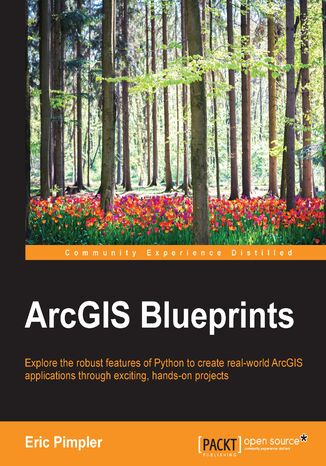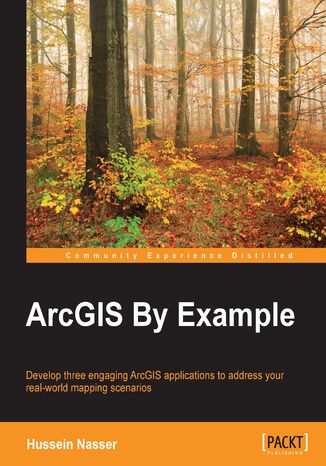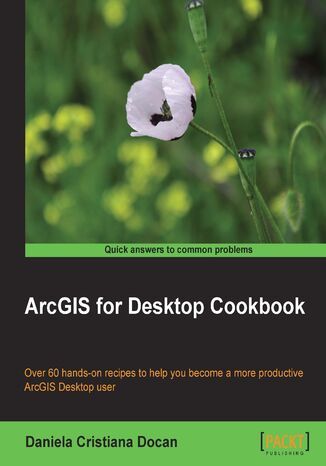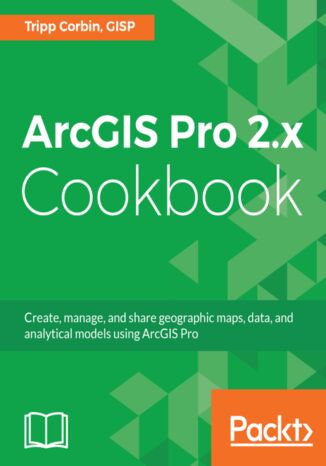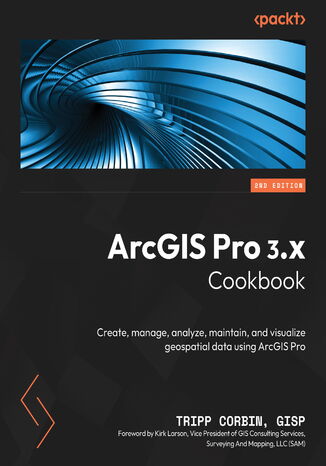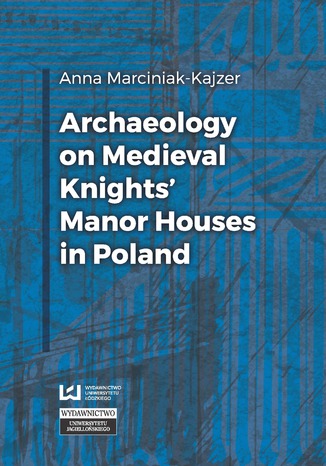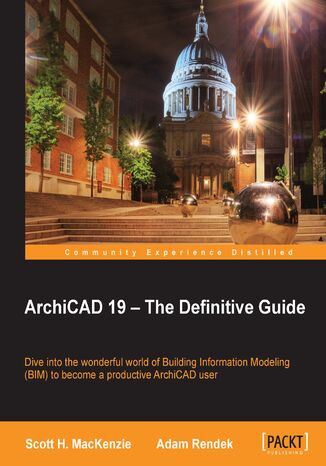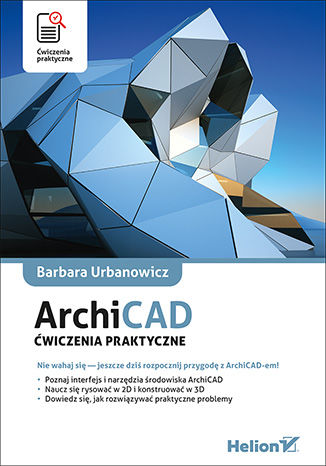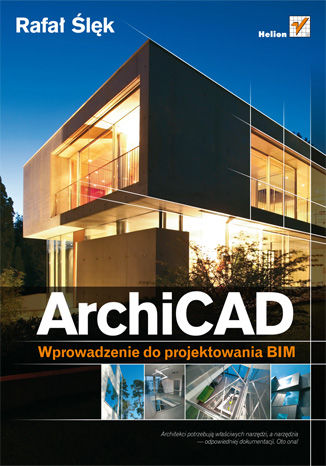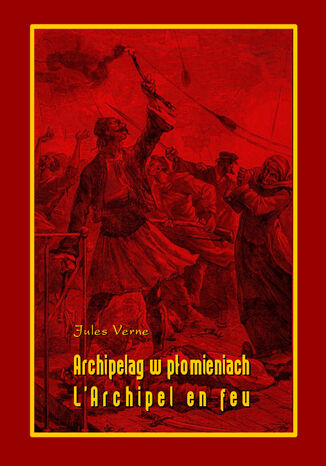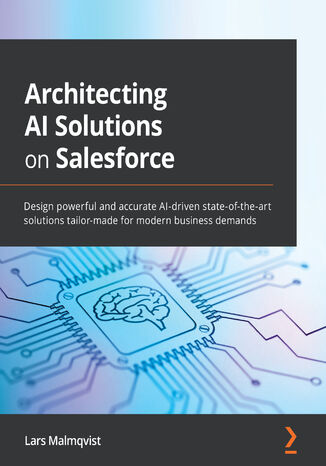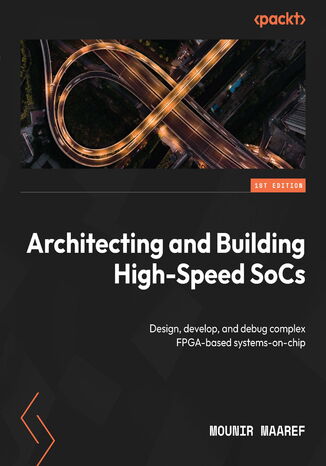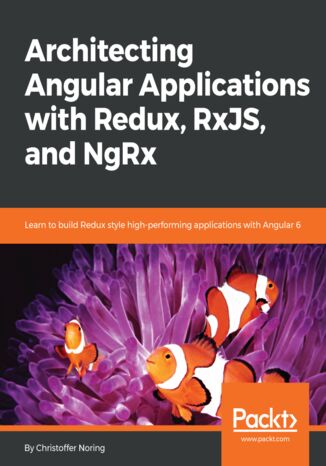Categories
Ebooks
-
Business and economy
- Bitcoin
- Businesswoman
- Coaching
- Controlling
- E-business
- Economy
- Finances
- Stocks and investments
- Personal competence
- Computer in the office
- Communication and negotiation
- Small company
- Marketing
- Motivation
- Multimedia trainings
- Real estate
- Persuasion and NLP
- Taxes
- Social policy
- Guides
- Presentations
- Leadership
- Public Relation
- Reports, analyses
- Secret
- Social Media
- Sales
- Start-up
- Your career
- Management
- Project management
- Human Resources
-
For children
-
For youth
-
Education
-
Encyclopedias, dictionaries
-
E-press
- Architektura i wnętrza
- Health and Safety
- Biznes i Ekonomia
- Home and garden
- E-business
- Ekonomia i finanse
- Esoterecism
- Finances
- Personal finance
- Business
- Photography
- Computer science
- HR & Payroll
- For women
- Computers, Excel
- Accounts
- Culture and literature
- Scientific and academic
- Environmental protection
- Opinion-forming
- Education
- Taxes
- Travelling
- Psychology
- Religion
- Agriculture
- Book and press market
- Transport and Spedition
- Healthand beauty
-
History
-
Computer science
- Office applications
- Data bases
- Bioinformatics
- IT business
- CAD/CAM
- Digital Lifestyle
- DTP
- Electronics
- Digital photography
- Computer graphics
- Games
- Hacking
- Hardware
- IT w ekonomii
- Scientific software package
- School textbooks
- Computer basics
- Programming
- Mobile programming
- Internet servers
- Computer networks
- Start-up
- Operational systems
- Artificial intelligence
- Technology for children
- Webmastering
-
Other
-
Foreign languages
-
Culture and art
-
School reading books
-
Literature
- Antology
- Ballade
- Biographies and autobiographies
- For adults
- Dramas
- Diaries, memoirs, letters
- Epic, epopee
- Essay
- Fantasy and science fiction
- Feuilletons
- Work of fiction
- Humour and satire
- Other
- Classical
- Crime fiction
- Non-fiction
- Fiction
- Mity i legendy
- Nobelists
- Novellas
- Moral
- Okultyzm i magia
- Short stories
- Memoirs
- Travelling
- Narrative poetry
- Poetry
- Politics
- Popular science
- Novel
- Historical novel
- Prose
- Adventure
- Journalism, publicism
- Reportage novels
- Romans i literatura obyczajowa
- Sensational
- Thriller, Horror
- Interviews and memoirs
-
Natural sciences
-
Social sciences
-
School textbooks
-
Popular science and academic
- Archeology
- Bibliotekoznawstwo
- Cinema studies
- Philology
- Polish philology
- Philosophy
- Finanse i bankowość
- Geography
- Economy
- Trade. World economy
- History and archeology
- History of art and architecture
- Cultural studies
- Linguistics
- Literary studies
- Logistics
- Maths
- Medicine
- Humanities
- Pedagogy
- Educational aids
- Popular science
- Other
- Psychology
- Sociology
- Theatre studies
- Theology
- Economic theories and teachings
- Transport i spedycja
- Physical education
- Zarządzanie i marketing
-
Guides
-
Game guides
-
Professional and specialist guides
-
Law
- Health and Safety
- History
- Road Code. Driving license
- Law studies
- Healthcare
- General. Compendium of knowledge
- Academic textbooks
- Other
- Construction and local law
- Civil law
- Financial law
- Economic law
- Economic and trade law
- Criminal law
- Criminal law. Criminal offenses. Criminology
- International law
- International law
- Health care law
- Educational law
- Tax law
- Labor and social security law
- Public, constitutional and administrative law
- Family and Guardianship Code
- agricultural law
- Social law, labour law
- European Union law
- Industry
- Agricultural and environmental
- Dictionaries and encyclopedia
- Public procurement
- Management
-
Tourist guides and travel
- Africa
- Albums
- Southern America
- North and Central America
- Australia, New Zealand, Oceania
- Austria
- Asia
- Balkans
- Middle East
- Bulgary
- China
- Croatia
- The Czech Republic
- Denmark
- Egipt
- Estonia
- Europe
- France
- Mountains
- Greece
- Spain
- Holand
- Iceland
- Lithuania
- Latvia
- Mapy, Plany miast, Atlasy
- Mini travel guides
- Germany
- Norway
- Active travelling
- Poland
- Portugal
- Other
- Przewodniki po hotelach i restauracjach
- Russia
- Romania
- Slovakia
- Slovenia
- Switzerland
- Sweden
- World
- Turkey
- Ukraine
- Hungary
- Great Britain
- Italy
-
Psychology
- Philosophy of life
- Kompetencje psychospołeczne
- Interpersonal communication
- Mindfulness
- General
- Persuasion and NLP
- Academic psychology
- Psychology of soul and mind
- Work psychology
- Relacje i związki
- Parenting and children psychology
- Problem solving
- Intellectual growth
- Secret
- Sexapeal
- Seduction
- Appearance and image
- Philosophy of life
-
Religion
-
Sport, fitness, diets
-
Technology and mechanics
Audiobooks
-
Business and economy
- Bitcoin
- Businesswoman
- Coaching
- Controlling
- E-business
- Economy
- Finances
- Stocks and investments
- Personal competence
- Communication and negotiation
- Small company
- Marketing
- Motivation
- Real estate
- Persuasion and NLP
- Taxes
- Social policy
- Guides
- Presentations
- Leadership
- Public Relation
- Secret
- Social Media
- Sales
- Start-up
- Your career
- Management
- Project management
- Human Resources
-
For children
-
For youth
-
Education
-
Encyclopedias, dictionaries
-
E-press
-
History
-
Computer science
-
Other
-
Foreign languages
-
Culture and art
-
School reading books
-
Literature
- Antology
- Ballade
- Biographies and autobiographies
- For adults
- Dramas
- Diaries, memoirs, letters
- Epic, epopee
- Essay
- Fantasy and science fiction
- Feuilletons
- Work of fiction
- Humour and satire
- Other
- Classical
- Crime fiction
- Non-fiction
- Fiction
- Mity i legendy
- Nobelists
- Novellas
- Moral
- Okultyzm i magia
- Short stories
- Memoirs
- Travelling
- Poetry
- Politics
- Popular science
- Novel
- Historical novel
- Prose
- Adventure
- Journalism, publicism
- Reportage novels
- Romans i literatura obyczajowa
- Sensational
- Thriller, Horror
- Interviews and memoirs
-
Natural sciences
-
Social sciences
-
Popular science and academic
-
Guides
-
Professional and specialist guides
-
Law
-
Tourist guides and travel
-
Psychology
- Philosophy of life
- Interpersonal communication
- Mindfulness
- General
- Persuasion and NLP
- Academic psychology
- Psychology of soul and mind
- Work psychology
- Relacje i związki
- Parenting and children psychology
- Problem solving
- Intellectual growth
- Secret
- Sexapeal
- Seduction
- Appearance and image
- Philosophy of life
-
Religion
-
Sport, fitness, diets
-
Technology and mechanics
Videocourses
-
Data bases
-
Big Data
-
Biznes, ekonomia i marketing
-
Cybersecurity
-
Data Science
-
DevOps
-
For children
-
Electronics
-
Graphics/Video/CAX
-
Games
-
Microsoft Office
-
Development tools
-
Programming
-
Personal growth
-
Computer networks
-
Operational systems
-
Software testing
-
Mobile devices
-
UX/UI
-
Web development
-
Management
Podcasts
arc42 by Example. Software architecture documentation in practice
Dr. Gernot Starke, Michael Simons, Stefan Zörner, Ralf D. Müller
When developers document the architecture of their systems, they often invent their own specific ways of articulating structures, designs, concepts, and decisions. What they need is a template that enables simple and efficient software architecture documentation. arc42 by Example shows how it's done through several real-world examples.Each example in the book, whether it is a chess engine, a huge CRM system, or a cool web system, starts with a brief description of the problem domain and the quality requirements. Then, you'll discover the system context with all the external interfaces. You'll dive into an overview of the solution strategy to implement the building blocks and runtime scenarios. The later chapters also explain various cross-cutting concerns and how they affect other aspects of a program.
Trup to ostatnie, czego potrzebowała Arcana, kiedy wysiadła z karocy po kilkuletnim pobycie poza domem. Jeśli to miał być prezent powitalny od brata, to nie był trafiony, szczególnie że zamordować dał się właśnie jej brat - sieur Ajin Trionfi, pan i dziedzic na włościach. Jakby tego było mało, po zamku kręcą się arystokraci zaproszeni na bal, potworna wieszczka, dramatyzujący mag i piękny mężczyzna o bardzo brzydkiej reputacji. Jedyne, czego tu jeszcze brakuje, to szalony alchemik w piwnicy... Dorastanie nigdy nie jest proste, ale w zamku Amorte to piekielny maraton spisków, flirtu i śmierci.
This book is an immersive guide to take your ArcGIS Desktop application development skills to the next levelIt starts off by providing detailed description and examples of how to create ArcGIS Desktop Python toolboxes that will serve as containers for many of the applications that you will build. We provide several practical projects that involve building a local area/community map and extracting wildfire data. You will then learn how to build tools that can access data from ArcGIS Server using the ArcGIS REST API. Furthermore, we deal with the integration of additional open source Python libraries into your applications, which will help you chart and graph advanced GUI development; read and write JSON, CSV, and XML format data sources; write outputs to Google Earth Pro, and more. Along the way, you will be introduced to advanced ArcPy Mapping and ArcPy Data Access module techniques and use data-driven Pages to automate the creation of map books.Finally, you will learn advanced techniques to work with video and social media feeds. By the end of the book, you will have your own desktop application without having spent too much time learning sophisticated theory.
ArcGIS is Esri's catalog of GIS applications with powerful tools for visualizing, maintaining, and analyzing data. ArcGIS makes use of the modern ribbon interface and 64-bit processing to increase the speed and efficiency of using GIS. It allows users to create amazing maps in both 2D and 3D quickly and easily. If you want to gain a thorough understanding of the various data formats that can be used in ArcGIS Pro and shared via ArcGIS Online, then this book is for you. Beginning with a refresher on ArcGIS Pro and how to work with projects, this book will quickly take you through recipes about using various data formats supported by the tool. You will learn the limits of each format, such as Shapefiles, Geodatabase, and CAD files, and learn how to link tables from outside sources to existing GIS data to expand the amount of data that can be used in ArcGIS. You'll learn methods for editing 2D and 3D data using ArcGIS Pro and how topology can be used to ensure data integrity. Lastly the book will show you how data and maps can be shared via ArcGIS Online and used with web and mobile applications.
Tripp Corbin, GISP, Kirk Larson
ArcGIS Pro, Esri's newest desktop GIS application, offers powerful tools for visualizing, maintaining, and analyzing data. This cookbook will help existing ArcMap users transition to ArcGIS Pro and teach new users how to utilize its GIS tools effectively. You’ll learn how to create geodatabases, convert data formats, link tables from outside sources, edit 2D and 3D data, ensure data integrity with topology, and enable advanced geodatabase behavior. By the end, you'll be able to effectively use ArcGIS Pro as your primary desktop GIS application, maintaining, analyzing, and displaying data using common methods and tools.
Archaeology on Medieval Knights' Manor Houses in Poland
The relicts of medieval knights’ manor houses in Poland today are so called “grodziska stożkowate” (motte) - the anonymous hills having in themselves remnants of wooden buildings, exceptionally made of stone or brick and numerous tiny artifacts being the trace of the past household equipment. Unlike to the castles they are not so often visited but more often destroyed. The book presents the image of medieval knights’ manor houses, which we know due to archaeological excavations carried on for half a century. Description of buildings household equipment and movables used by the people of the past was completed by transfers from written sources which allows for better understanding the live of medieval knights’ family.
Pomaganie nie zawsze wychodzi nam na dobre. No może troszkę przesadzał, ale czuł się bezradny a przez to niepotrzebny. Miażdzenie niewielkiej kobiety swoim niemrawym ciałem też nie poprawiało mu humoru. Życie jej nie oszczędzało, straciła wszystko co się dla niej liczyło. Zyskała wroga. I to nie jednego. Niestety jeden z nich przykleił się do niej jak guma do podeszwy. Czy ucieczka będzie rozwiązaniem jej problemów? Czy aby na pewno wróg jest wrogiem? Życie bywa przewrotne.
Archeologia wobec materialnych śladów współczesności
Dawid Kobiałka, Arkadiusz Marciniak, Michał Pawleta
Prezentowana publikacja jest próbą podsumowania dotychczasowych doświadczeń w uprawianiu archeologii współczesności w Polsce, a także nakreślenia potencjalnych przyszłych pól i perspektyw badawczych. Poprzez integrowanie różnych środowisk naukowych oraz pozanaukowych w założeniu ma promować ideę interdyscyplinarnej współpracy wokół dziedzictwa nieodległej przeszłości, inkluzywne podejście do nauki oraz koncepcję nauki obywatelskiej. (...) archeologia współczesności, zwracająca swoją uwagę na kulturę materialną niedawnej przeszłości i jej miejsce w teraźniejszości, oraz złożone relacje, jakie to generuje, ma szansę rozwinąć się w naukę, która skutecznie będzie także podejmować problemy i wyzwania istotne dla współczesnego i przyszłego społeczeństwa, stając się archeologią XXI w., archeologią (dla) naszych czasów. Wierzymy, że przed archeologią rysuje się tym samym duża szansa stania się ważnym głosem w debatach toczonych we współczesnej humanistyce, przez co może ona poszerzyć i rozbudować swą szczególną pozycję, jaką zajmuje wśród dyscyplin badających przeszłość. fragment Wstępu Czytelnik otrzymuje książkę z zakresu archeologii współczesności, będącą swoistą jej diagnozą w ostatnich dwudziestu latach, zwłaszcza w Polsce. Ukazany został także kontekst jej rozwoju i dynamicznych przemian. Archeologia ta stara się przebić wśród "klasycznych" działów archeologii, co czyni z determinacją, z pewnym trudem, ale i z sukcesem. Perspektywa minionych dwóch dekad pozwala Autorom publikacji na podjęcie próby nakreślenia jej najbliższych perspektyw rozwoju i kierunków, w jakich zapewne będzie zmierzała. Z recenzji prof. dr hab. Danuty Minty-Tworzowskiej (...) archeologia współczesności stanowi nową i atrakcyjną formę partycypacji w kulturze, która może stać się inspiracją dla wypracowania nowej formuły uprawiania archeologii, zrywającej z instytucjonalną doxa, oraz jej adekwatnej obecności w przestrzeni publicznej (...). Archeologia zajmująca się czasami nieodległej przeszłości generuje bowiem potrzebę przemyślenia zasadniczych cech i sposobów funkcjonowania całej dyscypliny - jej celów, zadań, priorytetów oraz zobowiązań. fragment Wstępu Archeologia współczesności - określana w literaturze anglojęzycznej jako archaeology of the contemporary past, archaeology of the recent past czy archaeology of the present - to interdyscyplinarny nurt badawczy, którego przedmiot zainteresowań stanowią: szeroko rozumiana współczesność (głównie wieki XX i XXI), jej materialne pozostałości i przekształcenia krajobrazów kulturowych. W zakres jej zainteresowań wchodzą wszelkie formy kultury materialnej, które powstały w ostatnich dziesięcioleciach czy nawet latach. Celami archeologii współczesności są odkrywanie, dokumentowanie i interpretacja tychże śladów, aby zrozumieć różne aspekty życia i społeczeństwa z nieodległej przeszłości. fragment Wstępu
Archeologia wspólnotowa - poznając przeszłość, nie zapominając o teraźniejszości
Kornelia Kajda, Dawid Kobiałka, Arkadiusz Marciniak
Archeologia wspólnotowa obejmuje w swoim polu dwa istotne aspekty, niewykluczające się nawzajem: możliwość realizowania działań nastawionych na badanie materialnych śladów przeszłości, przy uwzględnieniu oczekiwań oraz potrzeb współcześnie żyjących ludzi. Słowem, archeologia wspólnotowa wychodzi naprzeciw współczesnym poglądom, według których dziedzictwo kulturowe (archeologiczne) jest dobrem (zasobem) – można je, a nawet więcej: należy rozsądnie wykorzystywać dla dobra współczesnych i przyszłych pokoleń. Mając to na względzie, w książce Archeologia wspólnotowa – poznając przeszłość, nie zapominając o teraźniejszości przedstawiono problematykę archeologii wspólnotowej i skonceptualizowano jej treść i formę. Rozważania te dopełnione zostały przez kwestie dotyczące roli i znaczenia współpracy pomiędzy archeologią a lokalnymi wspólnotami. Opisano też reprezentatywne projekty i prace terenowe, ukazujące różne wymiary współpracy pomiędzy archeologią a społeczeństwem. Zamierzeniem redaktorów tomu było zebranie najnowszych i oryginalnych prac, powstałych w polskim środowisku naukowym, które odnoszącą się do współpracy i włączania lokalnych wspólnot w prace naukowe oraz ochronę dziedzictwa kulturowego. Jest to pierwsza tego rodzaju publikacja na polskim rynku wydawniczym. Idea uspołecznienia archeologii – zasadniczy cel, jaki stawiają sobie redaktorzy tomu i jego autorzy – to pomysł godny uznania nie tylko jeśli chodzi o upowszechnienie interesującej nas dyscypliny. Jak wynika z lektury tekstów, zawiera w sobie znacznie wzbogacony walor poznawczy, tkwiący już w samych założeniach archeologii wspólnotowej. Zawarte bowiem w tytule sformułowanie „poznając przeszłość, nie zapominając o teraźniejszości” oznacza nie tylko odniesienie do najnowszych, często tragicznych wydarzeń, które pamiętamy, lecz komunikuje o tym, że ukierunkowana perspektywicznie teraźniejszość stanowi pryzmat, za pośrednictwem którego postrzegamy przeszłość i dla której ją poznajemy. z recenzji prof. dr. hab. Henryka Mamzera Tom zgromadził wybitnych polskich badaczy tworzących zręby archeologii wspólnotowej i nadających kierunek przyszłym badaniom w jej zakresie. Niniejsza praca jest pokłosiem dojrzałej, a zarazem oryginalnej refleksji i podejmowanych zgodnie z nią badań empirycznych. z recenzji prof. dr hab. Danuty Minty-Tworzowskiej
ArchiCAD. Ćwiczenia praktyczne
Nie wahaj się — jeszcze dziś rozpocznij przygodę z ArchiCAD-em! Poznaj interfejs i narzędzia środowiska ArchiCAD Naucz się rysować w 2D i konstruować w 3D Dowiedz się, jak rozwiązywać praktyczne problemy ArchiCAD to specjalistyczne oprogramowanie do projektowania architektonicznego i przygotowywania dokumentacji technicznej, wyposażone w wiele intuicyjnych narzędzi i funkcji dostosowanych do rzeczywistych potrzeb architektów, budowniczych i projektantów wnętrz. Swoją ogromną popularność wśród profesjonalistów program ten zawdzięcza wysokiej wydajności pracy i wygodzie obsługi, a także zastosowanemu przez twórców obiektowemu podejściu, dzięki któremu aplikacja w pełni realizuje paradygmat BIM, co znacznie upraszcza projektowanie budynków o różnej skali i o różnym przeznaczeniu. „ArchiCAD. Ćwiczenia praktyczne” to pozycja dla tych, którzy bez zbędnych wstępów chcą zacząć korzystać z programu. Autorka podręcznika opiera się na swoim wieloletnim doświadczeniu. Przedstawia tu absolutne minimum wiedzy teoretycznej konieczne do poznania mechanizmów działania aplikacji, aby jak najszybciej przejść do praktycznej prezentacji możliwości narzędzi oraz opisu sposobów rozwiązywania konkretnych zadań i codziennych problemów architekta. Nawet jeśli nigdy wcześniej nie miałeś do czynienia z systemami CAD, nie musisz się martwić — dzięki lekturze kolejnych ćwiczeń krok po kroku poznasz filozofię korzystania z ArchiCAD-a oraz przejdziesz przez kolejne etapy tworzenia projektu. Interfejs programu i korzystanie z jego elementów Przegląd najważniejszych narzędzi rysunkowych Podstawy rysowania dwuwymiarowego Korzystanie z obiektów w projektowaniu 3D Modelowaniu budynków i wnętrz w 3D Wymiarowanie i opisywanie elementów projektu Przygotowywanie i drukowanie dokumentacji Nic nie nauczy Cię ArchiCAD-a lepiej niż ćwiczenia praktyczne!
ArchiCAD. Wprowadzenie do projektowania BIM
Architekci potrzebują właściwych narzędzi, a narzędzia — odpowiedniej dokumentacji. Oto ona! ArchiCAD to najczęściej wykorzystywane narzędzie wspomagające projektowanie architektoniczne. Uwielbiają je architekci i architekci krajobrazu oraz projektanci wnętrz. Łatwa i intuicyjna obsługa, duże możliwości, szeroki wybór specjalizowanych narzędzi do opracowywania dokumentacji 2D i 3D oraz funkcje umożliwiające tworzenie atrakcyjnych wizualizacji sprawiły, że środowisko to, rozwijane przez węgierską firmę Graphisoft, zagościło w biurach projektowych na całym świecie, a także zjednało sobie rzesze fanów wśród studentów kierunków architektonicznych, budowlanych i artystycznych. Korzystanie z ArchiCAD-a nie nastręcza wielkich trudności, ale - podobnie jak w przypadku każdego programu komputerowego - nauka może odbywać się czasochłonną metodą prób i błędów lub postępować znacznie szybciej, gdy dysponuje się odpowiednim źródłem wiedzy, takim jak książka „ArchiCAD. Wprowadzenie do projektowania BIM ”. Wprowadzi ona użytkownika w zagadnienia związane z projektowaniem architektonicznym, nauczy unikać częstych błędów i pozwoli nabrać doświadczenia umożliwiającego samodzielną pracę w programie. Publikacja stanowi doskonałe uzupełnienie systemu pomocy aplikacji, jak również praktyczny przewodnik po świecie nowoczesnej technologii modelowania informacji o budynku - BIM. Konfiguracja sprzętu i instalacja programu ArchiCAD Graficzny interfejs użytkownika aplikacji i jego składniki Organizacja pracy w środowisku ArchiCAD i zasady bezpieczeństwa Podstawowe możliwości tworzenia i edycji modelu Korzystanie z narzędzi do modelowania elementów budynku Tworzenie dokumentacji 2D na podstawie modelu Projektowanie architektoniczne jeszcze nigdy nie było tak proste!
Podróż w głąb radzieckiego piekła! Archipelag GUŁag monumentalna praca słynnego pisarza i myśliciela Aleksandra Sołżenicyna, poświęcona więzienno-obozowej martyrologii narodu rosyjskiego i obywateli innych republik ZSRR i krajów, łączy w sobie elementy powieści, autobiografii, reportażu, wspomnień świadków i uczestników. Dzięki tej książce, opublikowanej w Paryżu w latach 1973-1975, świat poznał prawdę o łagrach i skrywanej przed opinią publiczną części historii ZSRR. Archipelag GUŁag, wielki akt oskarżenia systemu totalitarnego, panującego w Związku Radzieckim, jest nie tylko niezwykłym dokumentem zbrodniczej epoki, lecz także utworem o niepodważalnych walorach literackich.
Podróż w głąb radzieckiego piekła! Archipelag GUŁag monumentalna praca słynnego pisarza i myśliciela Aleksandra Sołżenicyna, poświęcona więzienno-obozowej martyrologii narodu rosyjskiego i obywateli innych republik ZSRR i krajów, łączy w sobie elementy powieści, autobiografii, reportażu, wspomnień świadków i uczestników. Dzięki tej książce, opublikowanej w Paryżu w latach 1973-1975, świat poznał prawdę o łagrach i skrywanej przed opinią publiczną części historii ZSRR. Archipelag GUŁag, wielki akt oskarżenia systemu totalitarnego, panującego w Związku Radzieckim, jest nie tylko niezwykłym dokumentem zbrodniczej epoki, lecz także utworem o niepodważalnych walorach literackich.
Podróż w głąb radzieckiego piekła! Archipelag GUŁag monumentalna praca słynnego pisarza i myśliciela Aleksandra Sołżenicyna, poświęcona więzienno-obozowej martyrologii narodu rosyjskiego i obywateli innych republik ZSRR i krajów, łączy w sobie elementy powieści, autobiografii, reportażu, wspomnień świadków i uczestników. Dzięki tej książce, opublikowanej w Paryżu w latach 1973-1975, świat poznał prawdę o łagrach i skrywanej przed opinią publiczną części historii ZSRR. Archipelag GUŁag, wielki akt oskarżenia systemu totalitarnego, panującego w Związku Radzieckim, jest nie tylko niezwykłym dokumentem zbrodniczej epoki, lecz także utworem o niepodważalnych walorach literackich.
Archipelag w płomieniach. LArchipel en feu
Archipelag w płomieniach (inna wersja tytułu polskiego przekładu to Archipelag w ogniu) - powieść Juliusza Verne'a z cyklu Niezwykłe podróże. Książka w dwóch wersjach językowych: polskiej i francuskiej. Version bilingue: polonaise et française. Archipelag... to powieść historyczna. Akcja rozgrywa się na tle walki między Grekami i Turków na wyspach Morza Egejskiego w 1820 roku. Archipelag w ogniu To punkt zwrotny w twórczości, który Verne podejmuje nową tematykę romans egzotyczny. L'Archipel en feu est un roman historique de Jules Verne, paru en 1884. Le récit se déroule sur fond de lutte entre Grecs et Turcs dans les îles de la mer Égée, dans les années 1820. LArchipel en feu est publié au moment o Jules Verne aborde un tournant dans son inspiration. Aprs le voyage lunaire, le tour du monde sous-marin ou en quatre-vingts jours, quelles autres intrigues technologiques inventer ? Verne se rabat donc sur l'exotisme et le romantisme. (https://fr.wikipedia.org/wiki/L'Archipel_en_feu)
Sergiusz Prokurat, Piotr Śmieszek
Jawa, Bali, Sumatra i... 17 tysięcy innych wysp Czego poszukuje w Indonezji europejski podróżnik? Różnorodności? Nietrudno o nią w kraju, którego kultura stanowi mozaikę wpływów indyjskich, chińskich, muzułmańskich i europejskich. Ciekawych ludzi? Tych najłatwiej spotkać na Jawie - najbardziej zaludnionej, najlepiej zagospodarowanej wyspie Indonezji. Egzotyki? Spośród 17 tysięcy wysp zamieszkałych jest 6 tysięcy. Każda ma odrębną kulturę, inny język, inne zwyczaje, tradycję, historię. Ludzie żyją tutaj lokalnie, sprawami swojej wyspy, w sojuszu z przyrodą, w izolacji od całego świata, którym zbytnio się nie interesują. I nawet nie zdają sobie sprawy z tego, jak piękny jest ich kraj i ile fascynujących miejsc w sobie kryje. Indonezyjski archipelag można podziwiać bez końca. Od Jawy z więcej niż setką wulkanów, przez Bali z tysiącem świątyń, mroczny Lombok, Sulawesi, zwaną "wyspą Orchidei", dzikie Borneo, Komodo, która jest ojczyzną ostatnich smoków naszych czasów, aż po zamieszkiwaną niegdyś przez kanibali niebezpieczną Papuę Nową Gwineę... Kraj tysięcy wysp zadziwia, urzeka, a przede wszystkim jest nieprzewidywalny. Przyciąga jak magnes miłośników przygód szukających szczęścia w podróży oraz odskoczni od zachodniego stylu życia. Niemniej jednak powstaje pytanie, czy masowy napływ turystów - z ich technologią, procesami globalizacyjnymi i logiką - na te dziewicze tereny nie sprawi, że tradycyjne rytuały, obrzędy odprawiane na indonezyjskich wyspach znikną zupełnie? Odwiedź na stronę książki: https://wyspyindonezji.pl lub jej fanpage: https://www.facebook.com/wyspyindonezji Autorzy oraz wydawnictwo zapraszają na cykl spotkań z Sergiuszem Prokuratem jednym z autorów książki. Łódź - 7 maja godz. 19.00, Kawiarnia Daleko Blisko na Piotrkowskiej 138 Gdańsk - 11 maja godz. 19.00, Kawiarnia Południk 18 na Garncarskiej 7 Toruń - 21 maja godz. 18.30, Dwór Artusa, Rynek Staromiejski 6
Agnieszka Golczyńska-Grondas, Małgorzata Potoczna
Książka zawiera reanalizę dokonań zespołu socjolożek i socjologów, który w latach 1992-2016 prowadził badania dotyczące biedy i wykluczenia społecznego w Łodzi, mieście o szczególnej historii, a także wyjątkowym współczesnym charakterze. Autorki opracowania prezentują historię działalności badawczego kolektywu, w skład którego wchodziły, oraz stosowane w analizach ramy teoretyczne, wiele miejsca poświęcając metodyce realizowanych przez zespół przedsięwzięć badawczych. Uwzględniając zarówno perspektywę socjohistoryczną, makrospołeczną, jak i podejście mikrosocjologiczne, przedstawiają specyfikę wielkomiejskiego ubóstwa, charakterystyczne dla niego zjawiska, mechanizmy i procesy oraz realia życia w zubożałych sąsiedztwach. Opisują funkcjonowanie instytucji realizujących zadania polityki społecznej w "enklawach biedy". Wskazują na aplikacyjne rezultaty badań w postaci programów kształcenia dla studentek i studentów pracy socjalnej i socjologii na Uniwersytecie Łódzkim oraz curriculów edukacyjnych przeznaczonych dla osób zatrudnionych w instytucjach i organizacjach pomocowych. W aneksach umieszczono przykłady narzędzi badawczych stosowanych w pracach zespołu. Książka może wzbudzić zainteresowanie nie tylko naukowczyń i naukowców zajmujących się kwestiami społecznymi czy osób zainteresowanych metodologią nauk społecznych, lecz także kadr odpowiedzialnych za kształtowanie polityki społecznej oraz praktyków i praktyczek szeroko rozumianej profesjonalnej pomocy.
Written for Salesforce architects who want quickly implementable AI solutions for their business challenges, Architecting AI Solutions on Salesforce is a shortcut to understanding Salesforce Einstein’s full capabilities – and using them.To illustrate the full technical benefits of Salesforce’s own AI solutions and components, this book will take you through a case study of a fictional company beginning to adopt AI in its Salesforce ecosystem. As you progress, you'll learn how to configure and extend the out-of-the-box features on various Salesforce clouds, their pros, cons, and limitations. You'll also discover how to extend these features using on- and off-platform choices and how to make the best architectural choices when designing custom solutions. Later, you'll advance to integrating third-party AI services such as the Google Translation API, Microsoft Cognitive Services, and Amazon SageMaker on top of your existing solutions. This isn’t a beginners’ Salesforce book, but a comprehensive overview with practical examples that will also take you through key architectural decisions and trade-offs that may impact the design choices you make.By the end of this book, you'll be able to use Salesforce to design powerful tailor-made solutions for your customers with confidence.
Modern and complex SoCs can adapt to many demanding system requirements by combining the processing power of ARM processors and the feature-rich Xilinx FPGAs. You’ll need to understand many protocols, use a variety of internal and external interfaces, pinpoint the bottlenecks, and define the architecture of an SoC in an FPGA to produce a superior solution in a timely and cost-efficient manner.This book adopts a practical approach to helping you master both the hardware and software design flows, understand key interconnects and interfaces, analyze the system performance and enhance it using the acceleration techniques, and finally build an RTOS-based software application for an advanced SoC design. You’ll start with an introduction to the FPGA SoCs technology fundamentals and their associated development design tools. Gradually, the book will guide you through building the SoC hardware and software, starting from the architecture definition to testing on a demo board or a virtual platform. The level of complexity evolves as the book progresses and covers advanced applications such as communications, security, and coherent hardware acceleration.By the end of this book, you'll have learned the concepts underlying FPGA SoCs’ advanced features and you’ll have constructed a high-speed SoC targeting a high-end FPGA from the ground up.
Managing the state of large-scale web applications is a highly challenging task with the need to align different components, backends, and web workers harmoniously. When it comes to Angular, you can use NgRx, which combines the simplicity of Redux with the reactive programming power of RxJS to build your application architecture, making your code elegant and easy to reason about, debug, and test.In this book, we start by looking at the different ways of architecting Angular applications and some of the patterns that are involved in it. This will be followed by a discussion on one-way data flow, the Flux pattern, and the origin of Redux.The book introduces you to declarative programming or, more precisely, functional programming and talks about its advantages. We then move on to the reactive programming paradigm. Reactive programming is a concept heavily used in Angular and is at the core of NgRx. Later, we look at RxJS, as a library and master it. We thoroughly describe how Redux works and how to implement it from scratch. The two last chapters of the book cover everything NgRx has to offer in terms of core functionality and supporting libraries, including how to build a micro implementation of NgRx.This book will empower you to not only use Redux and NgRx to the fullest, but also feel confident in building your own version, should you need it.
Carl-Hugo Marcotte, Nick Cosentino
This unique ASP.NET Core book will fill in the gaps in your REST API and backend designs. Learn how to build robust, maintainable, and flexible apps using Gang of Four (GoF) design patterns and modern architectural principles. This new edition is updated for .NET 8 and focuses exclusively on the backend, with new content on REST APIs, the REPR pattern, and building modular monoliths.You’ll start by covering foundational concepts like REST, the SOLID principles, Minimal APIs, dependency injection in .NET, and other ASP.NET Core 8 mechanisms. Then, you’ll learn to develop components using design patterns, including many from the GoF. Finally, you’ll explore organizing your application code with patterns that vary from layers to feature-oriented vertical slice designs, covering CQS and a deep dive into microservices along the way. A brand-new e-commerce project at the end of the book will tie it all together.This how-to guide will teach you how to assemble your own APIs from building blocks, to suit whatever real-world requirements you may have.

